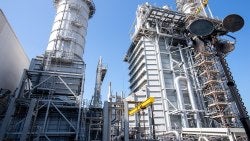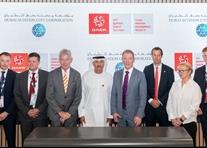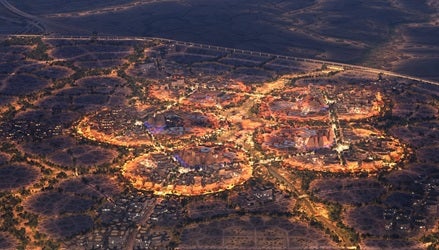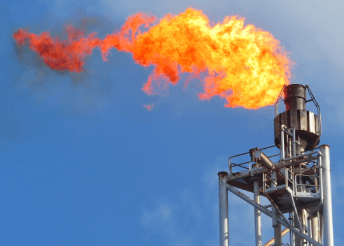Rejlers wins engineering contract on Borouge project
14 May 2025

Register for MEED’s 14-day trial access
Rejlers Abu Dhabi, a subsidiary of Swedish engineering services firm Rejlers, has secured a detailed engineering job on a polyethylene production capacity expansion project of petrochemicals producer Borouge.
Borouge has undertaken the project to expand its PE4 and PE5 polyethylene production units to increase their nameplate capacity from 540,000 tonnes a year (t/y) to 700,000 t/y each.
Rejlers Abu Dhabi has secured the detailed engineering job as a sub-contract from Abu Dhabi’s Target Engineering Construction Company, the main contractor executing the engineering, procurement and construction (EPC) works on the project.
Borouge announced awarding the main EPC contract for the PE4 and PE5 polyethylene production unit expansion project to Target in late April.
EPC works on the project are expected to be completed in the first quarter of 2027, Borouge said.
The project will contribute towards Borouge’s goal of increasing its overall production capacity to 6.6 million t/y by 2028.
Borouge has also announced initiating a project to upgrade its second ethane cracker unit (EU2), adding 230,000 t/y of capacity, which is a 15% increase for the EU2 cracker.
Adnoc Gas and Adnoc Refining, subsidiaries of Abu Dhabi National Oil Company (Adnoc Group), will supply ethane feedstock for the EU2 upgrade project, with completion scheduled for 2028-end.
Borouge awarded Germany-headquartered Linde Engineering a contract to perform front-end engineering and design (feed) on the EU2 upgrade project.
Borouge expects the two output capacity expansion projects to contribute between $165m and $200m in annual earnings before interest, taxes, depreciation and amortisation (Ebitda).
ALSO READ: Borouge awards hydrogen extraction project contract
Borouge entered operations in 2001, with a production capacity of 450,000 t/y of polyethylene. The Borouge 2 and Borouge 3 expansion projects took the capacity to 2 million t/y and 4.5 million t/y of polyethylene and polypropylene in 2010 and 2014, respectively.
When the under-construction Borouge 4 complex enters operations, Borouge’s overall production capacity will increase significantly from 5 million t/y to 6.4 million t/y, making it the world’s largest single-site polyolefins facility.
The upcoming Borouge 4 polyolefins complex will feature two polyethylene plants – each with a capacity of 700,000 t/y – using the third generation of Borealis Borstar technology. These plants will be supplied by an ethane cracker with a capacity of more than 1.5 million t/y of ethylene, as well as associated ethylene derivatives.
Following the signing of a final investment decision agreement worth $6.2bn by Adnoc and Borealis in November 2021, Borouge awarded the main EPC contracts for the Borouge 4 project in December of that year.
The EPC packages, the winning contractors, their estimated contract values and a brief scope of work are as follows:
- Early works (package one) – Al-Asab General Transport & Contracting (UAE) – site preparation and early civil works
- Ethane cracker (package two) – Technip Energies (France)/Target Engineering (UAE) – $1.58bn – building an ethane cracker with a manufacturing capacity of 1.5 million t/y of ethylene
- Polymers production (package three) – Tecnimont (Italy) – $1.35bn – building two new polyethylene manufacturing plants and a unit to produce 1-hexene, a component in the production of high-performance polyethylene
- Utilities and offsites (package four) – Tecnimont (Italy) – $1.5bn – constructing non-process buildings, roads, infrastructure, internal and external interfaces, tankage systems, flaring systems and utilities, as well as integration of Borouge 4 with the existing facilities
- Second cross-linkable-polyethylene (XLPE) plant (package five) – Tecnimont (Italy) – $350m – building an XLPE plant with a capacity of 100,000 t/y.
Italian contractor Maire Tecnimont executed the front-end engineering and design works for Borouge 4.
Borouge awarded France-based Axens a contract to provide licensed technologies in January 2020. This covered supplying a methyl tertiary butyl ether unit coupled with a 1-butene production unit and 1-hexene unit for the project.
The new Borouge 4 facility will cover an area equivalent to almost 500 football pitches, or more than three times the size of Al-Maryah Island in Abu Dhabi. It will produce enough polyolefins annually to make pipes to supply water to 35 million households.
Borouge Group International
Borouge is the petrochemicals-producing joint venture of Abu Dhabi National Oil Company (Adnoc) and Austrian energy company Borealis. Adnoc owns the majority 56% stake in Borouge, with Borealis holding a 34% stake. The remaining 10% of shares in Borouge trade on the Abu Dhabi Securities Exchange following an initial public offering in June 2022, from which Adnoc Group earned proceeds of $2bn.
In March, Adnoc and Austrian energy company OMV entered into a binding framework agreement to combine their shareholdings in Borouge and Borealis and take control of a greater share of the global chemicals market.
Adnoc has also entered into a share purchase agreement with Canada-based Nova Chemicals Holdings, an indirectly wholly-owned company of Abu Dhabi’s sovereign wealth institution Mubadala Investment Company, for 100% of Nova Chemicals Corporation (Nova).
Adnoc and OMV have also agreed that upon completion of the planned merger of Borouge and Borealis, the new entity – which will be known as Borouge Group International – will acquire Nova for $13.4bn including debt, further expanding its footprint in North America.
Borouge Group International is intended to be headquartered and domiciled in Austria, with regional headquarters in the UAE. In addition, Borouge Group International will hold corporate hubs in Canada’s Calgary, Pittsburgh in the US and Singapore.
The combination of Borouge and Borealis, and the acquisition of Nova, are expected to complete in the first quarter of 2026, subject to regulatory approvals and other customary conditions, Adnoc said.
The acquisition, together with the contribution of the upcoming Borouge 4 petrochemicals project in Abu Dhabi, will create a major polyolefins producer valued at over $60bn. It will be the world’s fourth-largest by nameplate production, with a potential of 13.6 million metric t/y across 62 plants globally.
Exclusive from Meed
-
 Local firm wins contract for Kuwait power project
Local firm wins contract for Kuwait power project19 November 2025
-
 UKEF issues $3.5bn interest letter for Al-Maktoum airport
UKEF issues $3.5bn interest letter for Al-Maktoum airport19 November 2025
-
 Riyadh gives Expo infrastructure bidders more time
Riyadh gives Expo infrastructure bidders more time19 November 2025
-
 NHC and Turkish firm sign $266m investment deal
NHC and Turkish firm sign $266m investment deal19 November 2025
-
 Egypt announces oil discovery in Western Desert
Egypt announces oil discovery in Western Desert19 November 2025
All of this is only 1% of what MEED.com has to offer
Subscribe now and unlock all the 153,671 articles on MEED.com
- All the latest news, data, and market intelligence across MENA at your fingerprints
- First-hand updates and inside information on projects, clients and competitors that matter to you
- 20 years' archive of information, data, and news for you to access at your convenience
- Strategize to succeed and minimise risks with timely analysis of current and future market trends

Related Articles
-
 Local firm wins contract for Kuwait power project
Local firm wins contract for Kuwait power project19 November 2025
Local firm Alghanim International has won a contract to provide engineering services at the Subiya power and water distillation plant.
Kuwait’s Central Agency for Public Tenders approved the award following a request from the Ministry of Electricity, Water & Renewable Energy.
The contract, valued at $286m, covers engineering, supply, installation, operation and maintenance services to convert the 250MW second phase of the plant’s open-cycle gas turbines to combined-cycle gas turbines.
The upgrade is intended to increase efficiency and provide additional generation capacity during periods of high demand.
In July, MEED reported that Alghanim had submitted the lowest bid for the tender ahead of local firms Al-Daw Engineering General Trading & Contracting and Al-Zain United General Trading & Contracting.
In 2024, US-based GE Vernova completed separate upgrades of four GE Vernova 9F.03 class gas turbines at the 2GW Sabiya combined-cycle power plant. Alghanim International acted as GE’s local engineering partner for that work.
The Subiya power and water distillation plant is the largest power and water plant in Kuwait, with a power generation capacity of 7,046.7MW, accounting for 35% of the country’s installed capacity.
It has a water desalination capacity of 100 million imperial gallons a day.
https://image.digitalinsightresearch.in/uploads/NewsArticle/15116135/main.jpg -
 UKEF issues $3.5bn interest letter for Al-Maktoum airport
UKEF issues $3.5bn interest letter for Al-Maktoum airport19 November 2025
Register for MEED’s 14-day trial access
The UK’s export credit agency UK Export Finance (UKEF) has issued a $3.5bn expression of interest letter to support the participation of UK businesses in the $35bn expansion of Al-Maktoum International airport, which is also known as Dubai World Central (DWC).
Chris Bryant, UK minister for trade, handed the letter to Khalifa Al-Zaffin, executive chairman of Dubai Aviation City Corporation and Dubai Aviation Engineering Projects (DAEP), and Paul Griffiths, CEO of Dubai Airports.
Letters of interest from UKEF, although not binding commitments, help ensure that UK exporters are given every opportunity to bid for contracts on a project. This is typically achieved by providing financial solutions in exchange for an agreed level of UK content used on the project.
Previous letter
It is not the first time UKEF has issued a letter of interest for the expansion of Al-Maktoum International airport. In 2014, it issued a $2bn letter of interest. In a statement at the time, UKEF said five prime UK-based contractors were being supported, along with UK suppliers across the supply chain.
The five prime contractors were Carillion, Kier, Balfour Beatty, Laing O’Rourke and Interserve. Of those five companies, Carillion entered liquidation in 2018 and Interserve entered administration in 2019. Balfour Beatty sold its shareholding in Dubai-based Dutco Balfour Beatty in 2017.
Although some progress was made on the project after the UKEF offer in 2014, the scheme stalled and was revived again in April 2024, when Dubai approved new designs for the airport.
Project progress
Since then, the project client, DAEP, has been awarding and tendering contracts for the first construction packages. It has awarded a AED1bn ($272m) deal to UAE firm Binladin Contracting Group to construct the second runway at the airport.
The enabling works for the terminal building are being undertaken by Abu Dhabi-based Tristar E&C.
DAEP is also close to formally awarding a contract for the substructure works for the West Terminal and Concourse One, Concourse Two and Concourse Three.
Tendering is also ongoing for an automated people-mover (APM) system. The system will run under the apron of the entire airfield and the airport’s terminals. It will consist of several tracks, taking passengers from the terminals to the concourses.
Four underground stations will be built as part of the first phase. The overall plan includes 14 stations across the airport.
The airport’s construction is planned to be undertaken in three phases. Construction works on the project’s first phase are expected to be completed by 2032.
The airport will cover an area of 70 square kilometres (sq km) south of Dubai and will have five parallel runways, five terminal buildings and 400 aircraft gates.
It will be five times the size of the existing Dubai International airport and will have the world’s largest passenger-handling capacity of 260 million passengers a year. For cargo, it will have the capacity to handle 12 million tonnes a year.
Dubai has said the plan is for all operations from Dubai International airport to be transferred to Al-Maktoum International within 10 years.
 This aviation package also includes:
This aviation package also includes:> Middle East invests in giant airports
> Broader region upgrades its airports
> Global air travel shifts easthttps://image.digitalinsightresearch.in/uploads/NewsArticle/15115788/main.jpg -
 Riyadh gives Expo infrastructure bidders more time
Riyadh gives Expo infrastructure bidders more time19 November 2025

Saudi Arabia’s Expo 2030 Riyadh Company (ERC), which is tasked with delivering the Expo 2030 Riyadh venue, has extended the deadline for firms to submit commercial offers for the contract to undertake the initial infrastructure works at the site to 23 November.
ERC had initially set deadlines of 26 October and 9 November for the submission of technical and commercial bids, respectively.
The tender for the project’s initial infrastructure works was issued in September, as MEED reported.
In October, MEED revealed that 16 firms had been invited to bid for the contract to undertake the initial infrastructure works at the Expo 2030 Riyadh site.
The firms invited to bid include:
- Shibh Al-Jazira Contracting (local)
- Hassan Allam Construction (Egypt)
- El-Seif Engineering Contracting (local)
- Al-Ayuni Investment & Contracting (local)
- Kolin Construction (Turkiye)
- Al-Yamama Trading & Contracting Company (local)
- Saudi Pan Kingdom (local)
- Unimac (local)
- Mapa Insaat (Turkiye)
- Yuksel Insaat (Turkiye)
- IC Ictas / Al-Rashid Trading & Contracting (Turkiye/local)
- Mota-Engil / Albawani (Portugal/local)
- Almabani / FCC Construction (local/Spain)
The overall infrastructure works – covering the construction of the main utilities and civil works at Expo 2030 Riyadh – will be split into three packages:
- Lot 1 covers the main utilities corridor
- Lot 2 includes the northern cluster of the nature corridor
- Lot 3 comprises the southern cluster of the nature corridor
MEED previously reported that ERC was expected to issue the tender for some of the infrastructure packages in September.
In July, US-based engineering firm Bechtel Corporation announced it had won the project management consultancy deal for the delivery of the Expo 2030 Riyadh masterplan construction works.
The masterplan encompasses an area of 6 square kilometres, making it one of the largest sites designated for a World Expo event. Situated to the north of the Saudi capital, the site will be located near the future King Salman International airport, providing direct access to various landmarks within Riyadh.
Countries participating in Expo 2030 Riyadh will have the option to construct permanent pavilions. This initiative is expected to create opportunities for business and investment growth in the region.
The expo is forecast to attract more than 40 million visitors.
The Public Investment Fund (PIF), Saudi Arabia’s sovereign wealth vehicle, launched ERC in June as a wholly owned subsidiary to build and operate facilities for Expo 2030.
In a statement, the PIF said: “During its construction phases, Expo 2030 Riyadh and its legacy are projected to contribute around $64bn to Saudi GDP and generate approximately 171,000 direct and indirect jobs. Once operational, it is expected to contribute approximately $5.6bn to GDP.”
https://image.digitalinsightresearch.in/uploads/NewsArticle/15115697/main.jpg -
 NHC and Turkish firm sign $266m investment deal
NHC and Turkish firm sign $266m investment deal19 November 2025
Register for MEED’s 14-day trial access
Saudi Arabia’s National Housing Company (NHC) has signed an investment agreement worth over SR1bn ($266m) with Turkiye’s Emlak Konut to develop new residential communities within the Mecca Gate project in Mecca.
The agreement was signed on the sidelines of the Cityscape Global 2025 event in Riyadh.
Emlak Konut will develop 1,000 residential villas spanning over 255,000 square metres (sq m).
The latest agreement follows the NHC’s signing of deals worth over SR8.5bn ($2.2bn) for the development of two mixed-use and residential communities in Riyadh.
The first agreement, worth over SR5.2bn ($1.4bn), was signed with local developer Retal Urban Development Company.
The deal encompasses the development of 4,839 residential units in the Al-Fursan suburb of Riyadh.
The other contract, worth over SR3.3bn ($880m), was signed with a joint venture of Egypt’s Hassan Allam Holding and local developer Tilal Real Estate for a mixed-use project in the Khozam district.
The development will cover an area of over 228,000 sq m.
It will be delivered through Grova Developments, the development arm of Hassan Allam Holding.
In 2023, NHC and Saudi Arabia’s Housing Ministry signed investment agreements totalling more than SR24bn ($6.4bn) to launch the Al-Fursan residential project.
Al‑Fursan is described as the largest scheme in terms of area and number of housing units that NHC is implementing in partnership with other real estate developers.
MEED reported in 2020 that Riyadh planned to oversee the development of more than 1 million homes by 2025 to meet growing demand in the kingdom.
By 2030, the Saudi capital aims to more than double its population, from 7-8 million to 15-20 million, and become one of the 10 wealthiest cities in the world.
https://image.digitalinsightresearch.in/uploads/NewsArticle/15115626/main.png -
 Egypt announces oil discovery in Western Desert
Egypt announces oil discovery in Western Desert19 November 2025
Register for MEED’s 14-day trial access
A new gas discovery has been made in Egypt’s Western Desert region, according to a statement released by the Ministry of Petroleum & Mineral Resources.
The discovery was made by Khalda Petroleum Company, a joint venture of state-owned Egyptian General Petroleum Corporation (EGPC) and US-headquartered Apache Corporation.
The field is expected to be brought online this week, according to the ministry.
The reserves were discovered after drilling the exploratory well ‘Gomana-1’, the ministry said.
It added that sensors confirmed the presence of gas reserves, and tests indicated that the well is expected to have a production rate of around 36 million standard cubic feet of gas a day.
Further tests are ongoing, and the initial evaluation of the well’s reserves is currently being finalised.
The ministry said that the discovery followed the introduction of new incentives designed to encourage additional gas investment within Khalda’s areas of operation.
Earlier this month, Egypt started gas production from the West Burullus field in the Mediterranean Sea, after connecting the first wells to the national gas grid.
The country is currently pushing to increase domestic gas production in order to meet domestic demand and reduce its import bill.
https://image.digitalinsightresearch.in/uploads/NewsArticle/15112551/main.png





